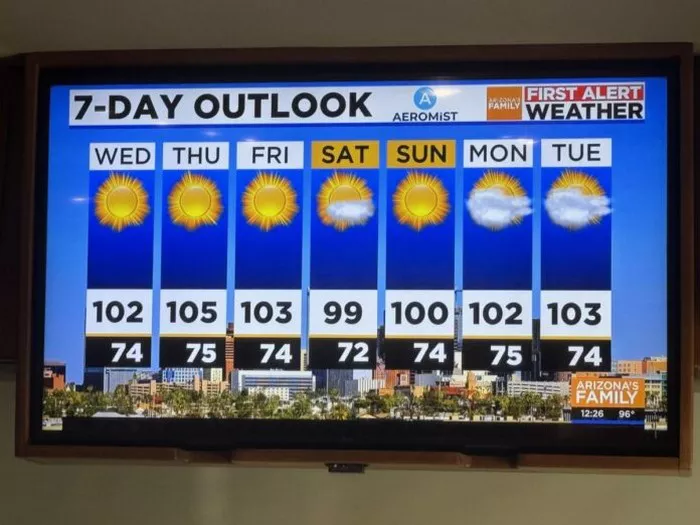As summer approaches, many RV enthusiasts begin their migration toward cooler northern climates. However, before setting off to camp by pristine blue lakes shaded by tall pines, some find themselves stuck in much hotter and less inviting places. One such example is being stranded in the Arizona desert, surrounded not by greenery but by cactus and scorching heat, due to unforeseen delays like home repairs.
During this forced stay in the desert, the focus shifts to preparing for the upcoming trip and the summer ahead. Tasks such as replacing water filters, recharging water softeners, checking engine and generator performance, and repairing neglected items become priorities. Yet, amidst this flurry of activity, the brutal Arizona heat quickly becomes a harsh reminder of the challenges that come with camping in extreme temperatures—something familiar to those who have spent time as camp hosts in the region.
To cope with the intense heat, several practical measures are necessary. Starting the air conditioning early in the day is crucial because once an RV’s interior heats above 100 degrees, cooling it down becomes a monumental task. Keeping curtains or shades drawn against the sun’s rays helps reduce indoor temperatures. Some campers try to add reflective materials to the windshield or inside cabinets, although this has limited effect if the goal is to prevent things like chocolate from melting.
Awnings are useful for shading the RV and, importantly, the refrigerator. However, campers must be mindful of the wind and never leave awnings extended unattended, as experience has shown this can cause damage. Fans play a vital role in circulating air both inside and outside the RV to catch whatever breeze is available.
Activity should be limited to cooler parts of the day. Walking, biking, or exercising is best done early in the morning or late in the evening to avoid the worst of the heat. Wearing a hat and applying sunscreen is essential, with regular reapplication to stay protected. When outdoors, staying in the shade can make a difference of as much as 20 degrees.
Hydration cannot be overstressed. Many tragic stories emerge from people underestimating the dangers of extreme heat, so drinking plenty of water is a must. Checking evening temperatures is advisable to determine if windows can be opened for cooling, although recent nights reaching 80 degrees still haven’t been cool enough to rely on natural ventilation.
A cool shower is often a disappointment in such climates, as the water tends to come out warm or even hot. Alternatives like spritzing oneself with water or applying a cold pack to the back of the neck can provide some relief. Despite the hardships, campers strive to find enjoyment in the experience.
One silver lining of camping during this time of year is the relative ease of securing a campsite, such as over Memorial Day, compared to the fierce competition found in more temperate destinations like Minnesota.
Related Topics
- Supreme Court Backs Dartmoor Wild Camping as Campers Praise Its Transformative Impact
- Massive Camping Gear Sale: Top-Rated Tent That Survived ‘A Month’s Rain in a Day’ Now £146 Off
- All-in-One Modular Camping Kit Revolutionizes Outdoor Gear with 10+ Integrated Tools in a Compact Design

